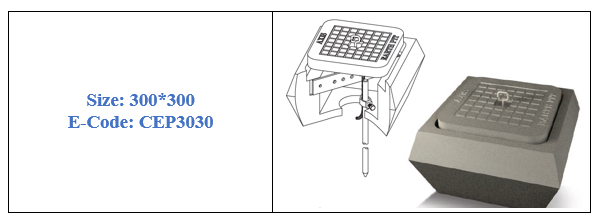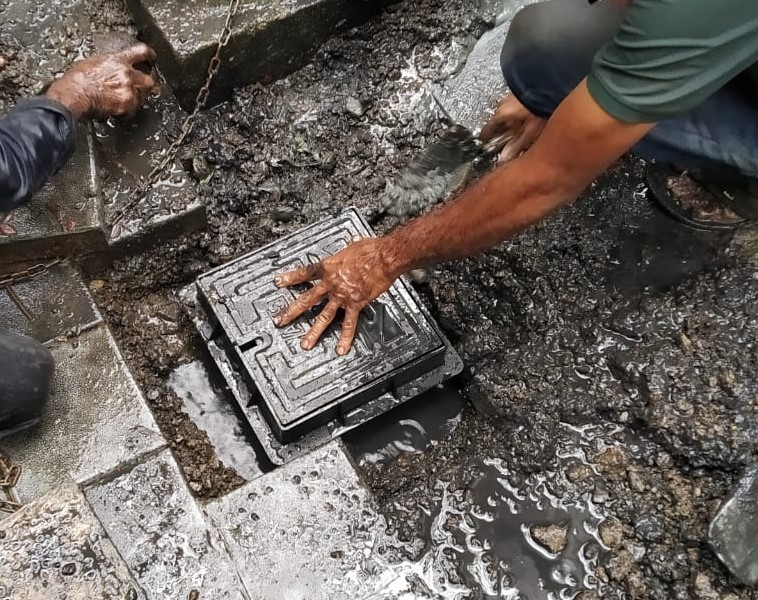An Earth Pit is a type of enclosure used in earthing systems to access and maintain the earth electrodes and other components of the earthing system. It is a type of underground box, typically made of reinforced concrete, that is installed at the site of the earthing system.
The Earth Pit is used to access the earth electrodes and other components of the earthing system, such as ground rods, ground plates, etc. It typically has a removable cover, which allows access to the interior of the chamber. The Earth Pit is typically installed near the earth electrodes and is connected to the earthing system using a conductor, such as a strip, wire or cable. It provides a convenient and safe way to access the earthing system for inspection, testing, or maintenance purposes.
Overall, the Earth Pit is an important component of earthing systems, providing access to the earth electrodes and other components of the earthing system. It is typically used for inspection, testing, and maintenance purposes, and is an essential component of many earthing systems.
Several Applications for Earth Pits
Inspection: The Earth Pit provides a convenient and safe way to access the earth electrodes and other components of the earthing system, allowing them to be inspected for signs of damage, corrosion, or other issues. This is important for ensuring the safety and performance of the earthing system, and for identifying any potential problems that need to be addressed.
Testing: The Earth Pit can be used to perform tests on the earthing system, such as resistance tests or continuity tests. These tests help to ensure that the earthing system is working properly, and can identify any issues that need to be addressed.
Maintenance: The Earth Pit provides access to the earth electrodes and other components of the earthing system, making it easy to perform maintenance tasks, such as cleaning components or watering to maintain the required resistance. This helps to ensure that the earthing system continues to operate effectively, and can extend the life of the system.
Earth Pit Installation

1)Excavate a hole in the ground at the site of the earthing system, using a shovel or other excavation tool. The earth pit will be installed on the ground level so the excavated space shall be sufficient enough to accommodate the earth pit. Earth excavation for regular earth, the pit is 1.5 m x 1.5 m x 3.0 m in size.
2)As per the earth system design, the earth electrode and earth conductor shall be placed in excavated space. Galvanised Iron Plates with dimensions of 500 mm x 500 mm x 10 mm (or greater) to increase Earth Contact and reduce Earth Resistance are suggested.
3) Fill the hole around the Earth electrode with conductive material, such as sand or gravel. This material provides a low-resistance connection to the earth and helps to ensure that the Earth Pit is grounded properly. Earth enhancing compounds can be used for better resistance requirements.
4) Now install the Earth Pit in the hole, making sure that it is level and stable. The Earth Pit should be made of reinforced concrete and should be strong and durable.
5) Connect the Earth Pit to the earthing system using a conductor, such as a wire or a cable. This conductor provides a grounding connection for the earthing system and allows the Earth Pit to be accessed and maintained.
Earth Pits can be made of a wide range of materials, depending on the specific requirements of the earthing system and the local conditions.
Common Materials Used for Earth Pits:
Reinforced Concrete: Reinforced concrete is a common material for Earth Pits, as it is strong, durable, and resistant to corrosion. Concrete is typically poured into a hole excavated in the ground, and is allowed to cure to form the Earth Pit.
Plastic: Plastic is a lightweight and versatile material that is often used for Earth Pits. Plastic Earth Pits are typically injection-moulded and can be produced in a range of sizes and shapes. They are relatively inexpensive and easy to install and maintain.
Composite Type: In this, the pit chamber is typically made up of concrete but for cover is made up of Metal, such as steel. These are typically fabricated from sheets of metal, and are welded to chamber frame or bolted together to form the enclosure, the cast iron pit covers are also used. These are strong and durable, but may be more expensive than other materials.
Classification of Axis Earth Pits
Light Weight Plastic Earth Pit:
Earth Housing Pit is made of high-grade polypropylene for high strength and stress levels, allowing it to withstand a maximum load of 2000 kg.

The lightweight design makes it simple to handle, store, and move, which improves installation efficiency. Due to the simple locking of two units, the termination area is expanded by 100%, allowing deeper earth electrode connections and lessening the impact of dangerous voltage gradients.
Concrete Earth Pit:
Concrete Earth Pits are heavy duty and with a load rating of up to 4000 kg. The connection of the rod is protected by the Concrete Pit, making it accessible for inspection. Installation of the earth bar can be done diagonally in slots provided for numerous conductor connections in the Concrete Inspection Pit.

Interconnection of Different Earth Pits:
A) With Transformer Neutral
Section 5 Page 53 & 54 Clause No. 22.1.3 and 22.3.1 of IS3043 state that the transformer neutral should connect to the ground grid.
The interlinking of the neutral earth pit with the general body earth has been permitted and supported by the previous norm.
According to the standard, an interconnected system should replace the prior practice of separate/isolated earth, for avoiding unnecessary redundancy and expenditure.
The design methodology, resistance measurement, and acceptance criteria of the earth grid when using such an interconnected earth system is specified in the Clauses of IS3043. An appropriate IS3043 excerpt is enclosed.
B) With Lightning Arrester:

The lightning protection system earth should be solidly bonded to the general earth grid, according to the standards IEC62305-3 and BS7430.
In case the hazardous potential is developed due to lightning strike, such interconnection provided due to lightning arrester with earth pit can withstand that heavy potential and provide a safe path with earthing connection.
C) With Electronic Equipment:
IEEE142-2007: In Clause No. 5.5.3 of the Section of Electronic Equipment Grounding, this standard discusses separate/isolated grounds.
As per the guideline for electronic equipment manufacturers for earthing, it is very complex to understand the functions and operations of neutral conductors.
IEC-61000-5-2 does not recommend isolated “ISOLATED” earth electrodes for computer and electronic systems. The electronic earth pit/system must connect to the earth grid beneath the soil.
IEEE-1100-2003 This standard discusses isolated grounding and single point grounding systems. It states that two different earthing systems are advised for electronics apparatus for safety and reliability of the connected system. It is beneficial to use a separate earth pit for the electronic system and connect it with the general earth grid.
Safety Steps for Earth Pits
1) Regular inspections of Earth-pit.
2) Take the essential precautions to ensure a high level of resistance.
3) Separate the electrical and instrumentation trenches.
4) Separately maintain neutral earth-pits.
5) Separate earthing is required to maintain a high mast or any structure utilised for thunder protection.
6) In the case of 2 earthings, maintain the thickness of the strip-earthing.
Hence, all earthing systems should have dedicated earth pits in order to maintain safety. View our wide range of Earth Pits here.
Thank you for reading the blog, Axis is a leading manufacturer and supplier of Electrical Components to over 80+ Countries. Talk to our industry expert by visiting our contact us section. You can also watch our videos by our experts – click here.
Follow us on LinkedIn for regular updates on our Products!








